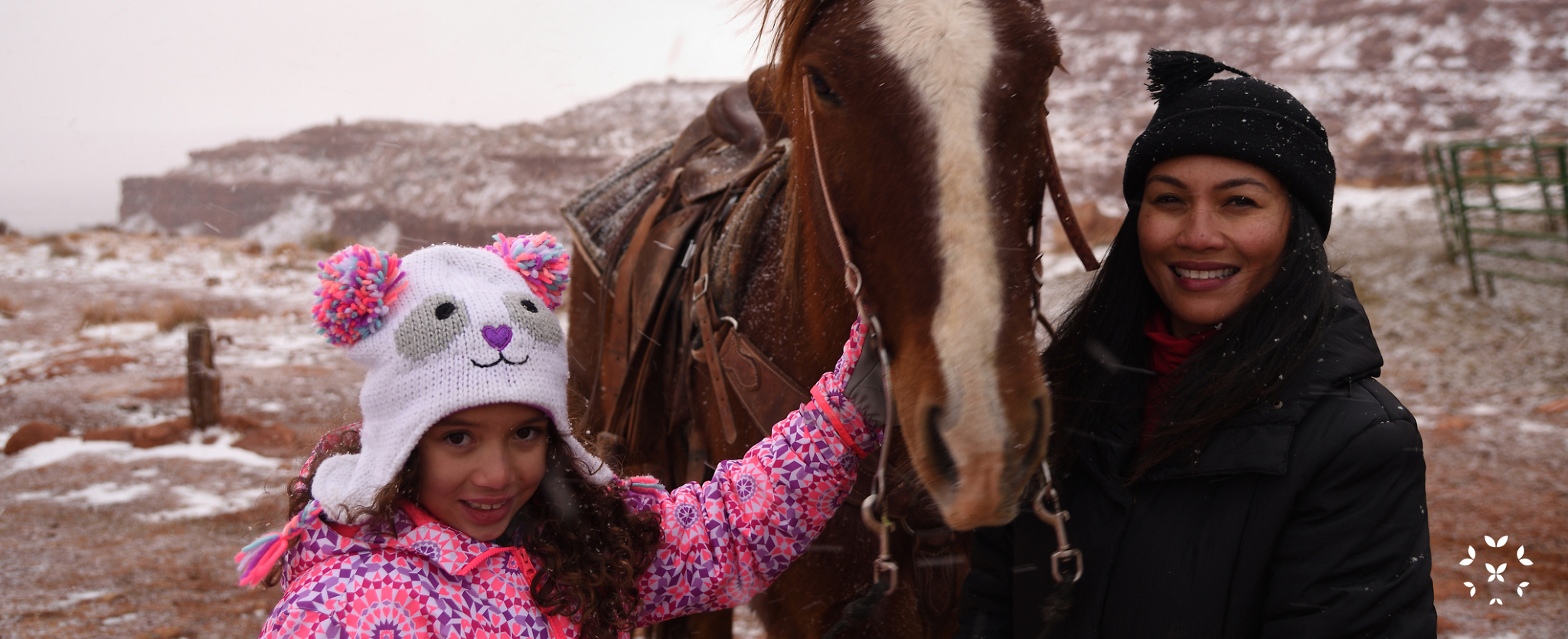Native Americans and Lupus
Native Americans (American Indians and Alaska Natives) are 1.7 times more likely to have lupus than other ethnicities and have the worst outcomes and mortality rates. Why? The reasons are nuanced and incredibly important for all living with lupus.
- Introduction to Native Americans and Lupus
- Why is understanding how lupus affects the Native American population so important?
- What are the differences in lupus disease activity for Native Americans?
- What are the barriers to care for Native Americans with lupus?
- In Conclusion
Introduction to Native Americans and Lupus
American Indians and Alaska Natives (AI/AN) are Native Americans whose ancestry originates in North, South, and Central America. As of 2019, approximately 5.7 million people in the United States identify as AI/AN. However, AI/AN ethnicity is often misclassified, and the number may be higher. Right now, it is believed that approximately .27% of AI/AN women and .054% of AI/AN men have lupus, though these numbers may also be higher. The highest lupus rates are in native peoples living in Oklahoma and Arizona.
Many factors contribute to the high lupus rates among, American Indians and Alaska Natives from genetics and antibodies to epigenetics and environmental factors, like smoking. The social determinants of health – socioeconomic status, education, and community engagement – play a significant role. Many in the American Indians and Alaska Natives population experience worse health and worse health care/management than other ethnic populations.
Understanding lupus disease activity among those most impacted helps create equity and foster inclusivity. It also recognizes an individual’s unique experience with the disease and what everyone can learn through more robust accurate data and a shared experience.

.
Why is understanding how lupus affects the Native American population so important?
Scientists agree that more research is needed to learn the depth of how lupus affects American Indians and Alaska Natives populations. For example, in the U.S., racial misclassification often occurs for AI/AN who live where there is more diverse ethnicity outside of prominent Native American communities. As a result, lupus activity may be misunderstood, and mortality rates underestimated.
Understanding more about lupus and who carries the highest disease burden:
- raises lupus awareness and promotes advocacy;
- ensures the equitable allocation of health resources, so those with the greatest need have easier access to disease treatment and management;
- increases funding opportunities for more medical research, clinical trials, and provides opportunities for those most affected to participate in research;
- helps with the development of more effective treatment options; and
- leads to improved record-management systems that accurately track healthcare data.
In a nutshell, everyone with lupus benefits from knowing exactly who has it and how they live with it.

What are the differences in lupus disease activity for Native Americans?
Lupus disease activity is consistently high for many AI/AN with lupus, and average onset occurs earlier – around age 29. In remote AI/AN communities, lupus may be diagnosed and treated by a primary care practitioner rather than a rheumatologist who may better understand the disease. As a result, lupus may be misdiagnosed for years or treated ineffectively, which can worsen symptoms and outcomes. As a result, AI/AN with lupus suffer more joint and organ damage due to rheumatoid arthritis (RA), interstitial lung disease, cardiovascular disease, lupus nephritis, blood clots, diabetes, and neuropathy.
The most common lupus symptoms for AI/AN include blood disorders and arthritis, including rheumatoid arthritis. Renal disorders like lupus nephritis also affect about 40% of AI/AN with lupus. Many are also diagnosed with mixed connective tissue disease, and Sjogren’s syndrome as lupus overlap diseases.
Genetically, American Indians and Alaska Natives with lupus have more human leukocyte antigens commonly found in autoimmune diseases like lupus. They also have high amounts of rheumatoid factor, and over 98% of AI/AN with lupus test positive for anti-nuclear autoantibodies.
Though more research is needed, scientists believe that epidemiology plays a significant role in lupus disease activity among AI/AN due to the following:
- Smoking: Currently, a higher percentage of AI/AN smoke, than other populations. It is also a common factor with family members who have lupus as well.
- Sun exposure: Many live in parts of the country where sun exposure is high, a known trigger for lupus.
- Air pollution: Those who live in larger cities may be more at risk due to air quality and exposure to toxins.
- Stress and trauma: Living daily under stress and trauma from poverty, abuse, and discrimination can increase the risk for chronic illnesses like lupus.

What are the barriers to care for Native Americans with lupus?
For some, the social determinants of health play a significant role in managing their lupus. More than 20% of AI/AN who live in urban areas live below the poverty level. About 23% of this population may lack education, including a high school diploma. These conditions have also led to higher alcoholism and smoking rates than the general population, which leads to poor health. Feeling isolated and marginalized – especially when living in urban areas – can also hasten disease.
There is also pervasive distrust in the government and the healthcare system. For years, Native Americans have been relocated far away from ancestral land, marginalized, and stripped of culture due to government policy. The stress burden can be tremendous. As a result, many AI/AN refuse to participate in research – especially anything that is government-funded.
Other barriers include:
Location and access to services: Many AI/AN live in rural communities far from healthcare centers. Regular healthcare can be spotty at best. Transportation outside of the community is difficult and expensive. Urban Indian health organizations (UIHO) funded by Indian Health Services (HIS) provide healthcare and case management for those without adequate healthcare coverage and living in urban areas. However, these organizations are historically underfunded and unable to meet demand.
The rheumatologist shortage: AI/AN with lupus suffer from the rheumatologist shortage, impacting those living in remote areas where accessing comprehensive healthcare is already challenging. A rheumatologist is more likely to spot the symptoms of lupus earlier than a primary care practitioner and start proper treatment early.
Primary care practitioner lupus treatment and management: Usually, primary care practitioners work in rural communities, not specialists. These practitioners often lack the experience needed to diagnose and treat lupus properly. Care can also be inconsistent, which does not give the incentive to continue seeking treatment if the same practitioner is not always available.

Everyone who has lupus should have the same opportunities and access to comprehensive, quality healthcare; yet, those who carry the highest disease burden do not always receive the most care. Understanding and treating lupus activity equally across ethnicities will ultimately benefit all impacted by autoimmune disease.
References
Cromer, J., Wofford, L., & Wyant, D. (2019). Barriers to healthcare access facing American Indian and Alaska Natives in rural America. Journal of Community Health Nursing, 36(4), 165-187. https://doi.org/10.1080/07370016.2019.1665320
Ferucci, E. (2020). Understanding the disproportionate burden of rheumatic diseases in indigenous North American populations. Rheumatic Disease Clinics, 46, 651-660. https://doi.org/10.1016/j.rdc.2020.07.006
Ferruci, E., Johnston, J., Gaddy, J., Sumner, L., Posever, J., Choromanski, T, Gordon, C., Lim, S., & Helmick, C. (2014). Prevalence and incidence of systemic lupus erythematosus in a population-based registry of American Indian and Alaska Native people, 2007-2009. American College of Rheumatology, 1-6. https://doi.org/10.1002/art.38720
Jim, M., Arias, E., Seneca, D., Hoopes, M., Jim, C., Johnson, N., & Wiggins, C. (2014). Racial misclassification of American Indians and Alaska Natives by Indian Health Services Contract Health Service Delivery Area. American Journal of Public Health, 104(53), S295-S302. https://dx.doi.org/10.2105%2FAJPH.2014.301933
Kheir, J., Guthridge, C., Johnston, J., Adams, L., Rasmussen, A., Gross, T., Munroe, M., Bourn, R., Sivils, K., Guthridge, J., Weisman, M., Wallace, D., Anaya, J., Villarraga, A., Jarvis, J., Harley, J., & James, J. (2018). Unique clinical characteristics, autoantibodies and medication use in Native American patients with systemic lupus erythematosus. Lupus Science & Medicine, 5(1), e000247. http://dx.doi.org/10.1136/lupus-2017-000247
McDougall, J., Helmick, C., Lim, S., Johnston, J., Gaddy, J., & Ferucci, E. (2018). Differences in the diagnosis and management of systemic lupus erythematosus by primary care and specialist providers in the American Indian/Alaska Native population. Lupus, 27, 1169-1176. https://doi.org/10.1177%2F0961203318763529
Peschken, C. & Esdaile, J. (2000). Systemic lupus erythematosus in North American Indians: a population based study. The Journal of Rheumatology, 27(8). https://www.researchgate.net/profile/Christine_Peschken/publication/12366331_Systemic_lupus_erythematosus_in_North_American_Indians_A_population_based_study/links/5d82774e92851ceb79140b39/Systemic-lupus-erythematosus-in-North-American-Indians-A-population-based-study.pdf
Author: Liz Heintz
Liz Heintz is a technical and creative writer who received her BA in Communications, Advocacy, and Relational Communications from Marylhurst University in Lake Oswego, Oregon. She most recently worked for several years in the healthcare industry. A native of San Francisco, California, Liz now calls the beautiful Pacific Northwest home.
All images unless otherwise noted are property of and were created by Kaleidoscope Fighting Lupus. To use one of these images, please contact us at [email protected] for written permission; image credit and link-back must be given to Kaleidoscope Fighting Lupus.
All resources provided by us are for informational purposes only and should be used as a guide or for supplemental information, not to replace the advice of a medical professional. The personal views expressed here do not necessarily encompass the views of the organization, but the information has been vetted as a relevant resource. We encourage you to be your strongest advocate and always contact your healthcare practitioner with any specific questions or concerns.

